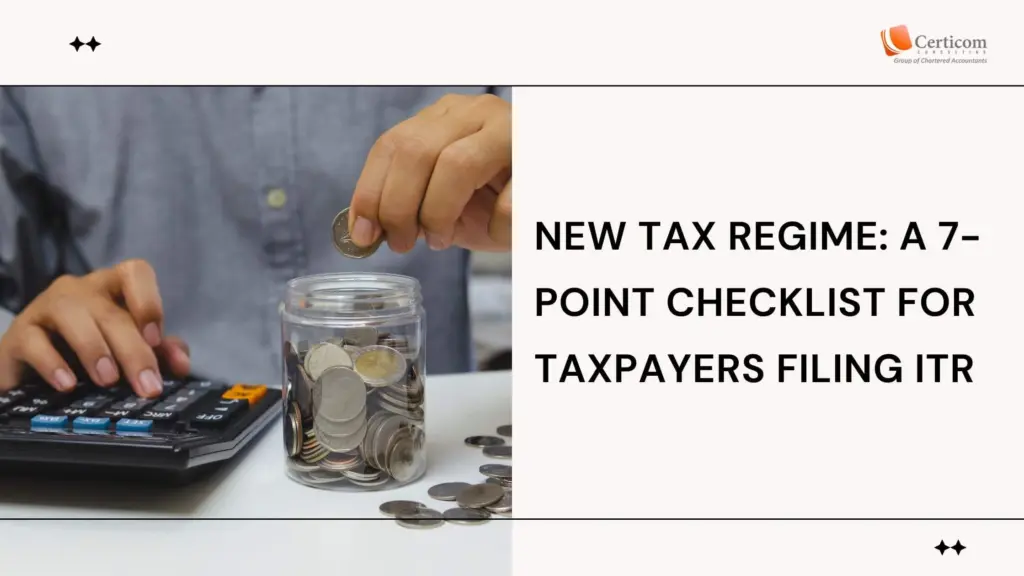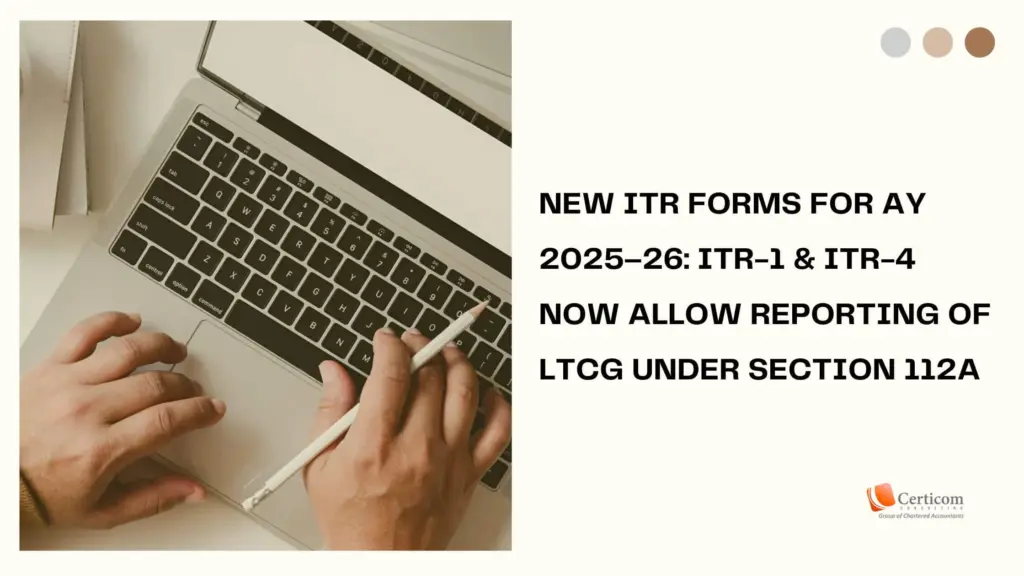New Tax Regime: A 7-Point Checklist for Taxpayers Filing ITR

As the deadline for filing income tax returns for FY 2024-25 (AY 2025-26) approaches, it’s important for taxpayers to understand the implications of choosing between the old and new tax regimes. The Income Tax Department has released ITR Forms 1 and 4, and the last date for individual taxpayers (not subject to audit) to file their returns is July 31, 2025.
Under the new tax regime, taxpayers are offered concessional rates of tax but are not eligible for most exemptions and deductions. Here’s a detailed look at the seven most critical aspects you should be aware of before filing your ITR under the new tax regime:
1. New Tax Regime is Now the Default Option
The new tax regime, introduced under Section 115BAC, has become the default regime starting FY 2023-24. This means that unless you explicitly choose to opt for the old regime while filing your return, your income will be taxed under the new regime by default.

2. Lower Tax Rates Under the New Regime
The new regime offers reduced tax rates compared to the old regime. For FY 2024-25 (AY 2025-26), the applicable tax slabs are:
New Regime Slabs:
| Income Slab (₹) | Tax Rate |
|---|---|
| 0 – 3 lakh | Nil |
| 3 – 7 lakh | 5% |
| 7 – 10 lakh | 10% |
| 10 – 12 lakh | 15% |
| 12 – 15 lakh | 20% |
| Above 15 lakh | 30% |
Also, under Section 87A, individuals earning up to ₹7 lakh annually are eligible for a full rebate, resulting in zero tax liability under the new regime.
⚠️ Note: Rates announced in Budget 2025 (exempting income up to ₹12 lakh) will apply from April 1, 2025, i.e., FY 2025-26. For the current ITR filing (FY 2024-25), the above slab rates apply.
3. Old vs. New Regime – Know the Difference
Under the old tax regime, taxpayers can claim various deductions (like Section 80C, 80D, and HRA exemption) but are subject to higher tax rates:
Old Regime Slabs:
| Income Slab (₹) | Tax Rate |
|---|---|
| 0 – 2.5 lakh | Nil |
| 2.5 – 5 lakh | 5% |
| 5 – 10 lakh | 20% |
| Above 10 lakh | 30% |
Taxpayers need to compare both regimes and select the one that offers a lower liability based on their eligible deductions and overall income.
4. Notify Employer About Your Chosen Regime
If you’re a salaried employee, it’s important to intimate your employer at the beginning of the financial year about your chosen tax regime. If no intimation is provided, the employer will assume that you have opted for the default (new) regime and deduct TDS accordingly.
5. No HRA Exemption Under New Regime
Under the new tax regime, House Rent Allowance (HRA)—which is a significant tax-saving component for salaried individuals—is not exempted. This could result in a higher tax outgo for those who pay rent but cannot claim HRA exemption.
6. Limited Deductions Permitted
The new regime disallows most deductions under Chapter VIA such as:
Section 80C (Investments like PPF, ELSS, LIC)
Section 80D (Health insurance)
Section 80G (Donations)
However, certain deductions are still permitted under the new regime:
Section 80CCD(2): Employer’s contribution to NPS
Section 80CCH: Contributions to Agniveer Corpus Fund
Section 80JJAA: Deduction for new employment generation
Additionally, from FY 2023-24, a standard deduction of ₹50,000 is allowed for salaried individuals and pensioners under the new regime.

7. Flexibility to Switch Regimes
Individual taxpayers without business income can switch between the old and new regimes every financial year. However, those with business or professional income can opt in or out only once, and the option, once withdrawn, cannot be opted for again unless the business ceases.
Final Takeaway
Choosing the right tax regime can have a significant impact on your tax liability. While the new regime offers simplified tax compliance and lower rates, it may not benefit those who rely heavily on deductions and exemptions. Therefore, it’s advisable to compare both regimes carefully—either using the Income Tax Department’s calculator or by consulting a tax professional—before filing your ITR.
Related Post
New ITR Forms for AY 2025–26: ITR-1 & ITR-4 Now Allow Reporting of LTCG under Section 112A
Agricultural Land Sale: How to Optimize Tax Benefits
Book A One To One Consultation Now For FREE
How can we help? *



